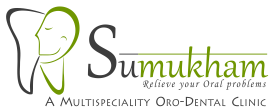It is normal for the children to have to unhealthy oral habits. Some of such habits include thumb sucking, nail biting, tongue thrusting, mouth breathing etc. In order to control such routines, separate appliances are designed and manufactured. These appliances are known as habit breaking appliances. These appliances can either be of removable or fixed type.
The importance of these appliances can be estimated by the effect of the pernicious habits. If these habits are not controlled, they may lead to periodontal diseases, change in the shape of jaws & change in the teeth position.
The various ill habits of the children are as follows:
Thumb sucking: Thumb sucking is the phenomenon in which the children suck either thumb or other finger. Although this condition is common in children below 3 years, most of them discontinue after this age. On the other hand, this habit can lead to many dentofacial changes.
Some of the clinical features of this habit are as follows:
- The maxillary and mandibular teeth suffers from lingual prolapsed & labial flaring.
- During such a condition, the tongue is inferiorly placed. This condition can lead to conditions such as posterior cross bite.
The diagnosis of this condition is quite easy as the changes are very much noticeable. The associated thumb appears to be very much clean and reddened. The fingernails may also be short and chapped. The lips may also seem to be hyperactive.
The following devices can be employed to control this condition:
- Blue grass appliances: These devices are mostly fabricated using Teflon. A modified six-sided roller constitutes these appliance. These devices are used for better control of the tongue, preventing the sucking process in a major way.
- Fixed intra oral anti thumb sucking appliance: They are devices that are attached to the upper teeth. The fitting is done with the help of bands, that are usually fitted to the first permanent molar or primary second molar.
- Quad helix: This appliance shall restrict the thumb from inserting. This can help in the correction of malocclusion.
Tongue thrusting: This condition is also known as immature swallow or reverse swallow. During such a condition, the tongue is place in a wrong position. The tongue can be placed either to the sides or too forward. A constant level of pressure is needed for swallowing. However, constant exposure to such a pressure can force the teeth to go out of alignment. This habit is involuntary and it is relatively difficult to rectify.
The causes for tongue thrusting are not much clear. However, many factors can cause such a condition. Some of them are as follows:
- Difficulty in deglutition.
- Other ill habits like thumb sucking, mouth breathing etc.
- A large and lengthy tongue.
- In some cases, the child may also have a tongue-tie.
There are several types of tongue thrust. The major types of tongue thrusting are anterior open bite, anterior thrust, unilateral thrust etc.
Mechanical therapy is prescribed for patients above 9 years of age. Some of the habit breaking appliances used in this context include:
- Fixed habit breaking appliance: Examples of such appliances are bands & crowns. They are mostly fitted on to the permanent molar.
- Removable appliances: A number of variants of Hawley's appliances are employed to treat it.
- Nance palatal arch appliances: For guiding the tongue in the right position, an acrylic button is used.
Mouth breathing habits: Normal respiration occurs through the nose. However in some cases, respiration occurs through mouth. This condition is known as mouth breathing. Changes might be present in the face due to this habit. The face of the child having this issue is known as adenoid faces. The major characteristics of such a face are narrow nasal passage and nose, short upper lip etc.
Using habit breaking appliance is regarded as the most effective way to treat this condition. On such device is oral screen. The oral screen prevents the inhaled air to enter the oral cavity. The oral cavity can also be closed.
The oral screen is a very thin rubber membrane that is commonly fitted onto the buccal & labial teeth surfaces. The device can also be fitted onto the vestibule of the mouth. Initially, in order to have some passage of air, windows are also fitted onto the oral screen.
